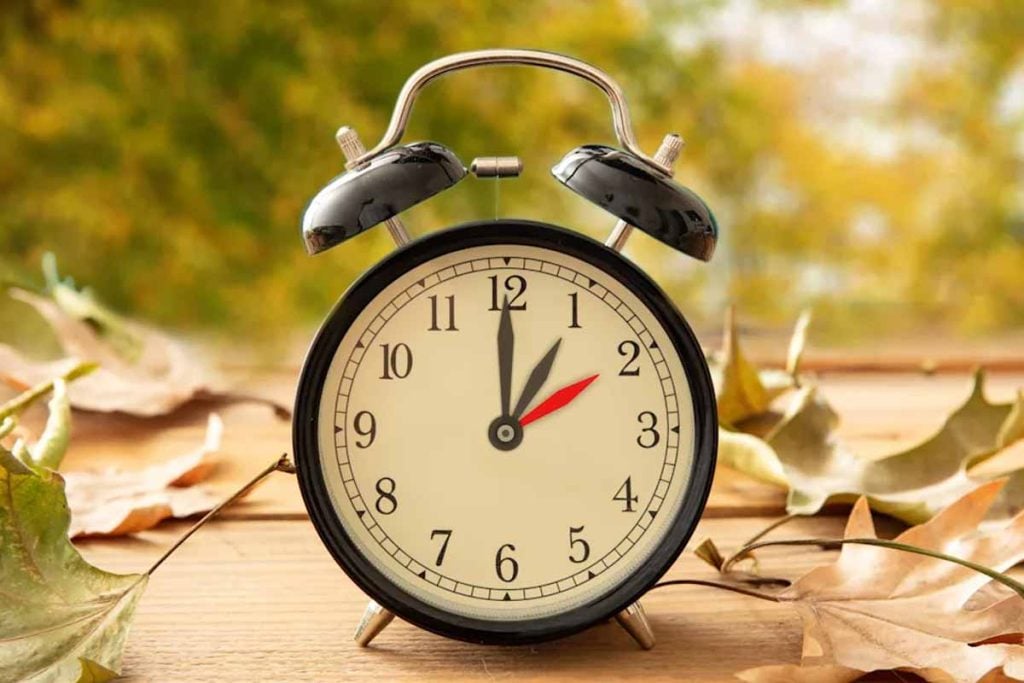An extra hour sounds like a gift, yet it tangles with your body’s clock. The shift touches sleep, mood, and even safety, so preparation helps. Because routines anchor our days, a small clock move can feel big. Plan ahead, then ease in with light exposure and steady habits. The transition lands quickly, yet your internal rhythm adjusts more slowly. Expect a short wobble, not a long slump. Handle it well and daylight saving time becomes a simple seasonal pivot, not a week-long drag.
What changes with daylight saving time ending
In the United States, the switch back to Standard Time happens on the first Sunday in November. This year it falls on Sunday, November 2, 2025, at 2:00 a.m., when clocks roll back one hour. The adjustment adds sixty minutes to the night. Although your internal clock may move slower than the hands.
Most smartphones, laptops, and connected gadgets update without help. So, the digital side stays simple. Ovens, microwaves, wall clocks, and car dashboards usually need a manual reset. So, change them before bed on Saturday. That way, breakfast, alarms, and weekend plans start on time, without guessing or math.
The hour gained feels generous, yet the body resists sudden shifts. Sleep pressure, light cues, and routine keep time inside you. Because of that, Sunday can feel off, then Monday may drag. Plan a calm morning, add bright light, and treat the day like a gentle reset after daylight saving time.
How the clock shift works and what resets
Time on the clock changes in an instant, yet circadian rhythm moves by degrees. Bright morning light nudges melatonin down, so you feel alert sooner. Darker evenings nudge it up, so yawns come earlier. That is helpful for some, although it steals light from late-day routines.
Sunrise creeps earlier, so mornings look brighter for a while. Sunset arrives sooner, so commutes, runs, and quick errands meet darkness. The trade-off is simple on paper, though daily life notices the difference. Plan tasks that need visibility earlier in the day to keep them smooth.
Your schedule adapts fastest when wake times stay fixed. Keep bedtime consistent, then aim light at the morning and calm the evening. Screens blast blue light that delays sleep, so dim them sooner. Good habits pull the body toward the new hour. That steadiness softens daylight saving time whiplash.
Sleep, mood, and safety during daylight saving time switch
Shifting the clock can nudge mood and focus, because even small sleep changes add up. People report fatigue, slower mental sharpness, and irritability. Some feel sleep fragmentation for a few nights. Symptoms of seasonal affective disorder can rise in northern regions as evening light fades away.
Start adjustments a few days ahead. Shift bedtime 15 to 20 minutes earlier each evening, because incremental adjustment persists. Maintain the identical waking hour, weekend included, so your pattern solidifies. Brief power naps under twenty minutes assist when energy declines, without delaying bedtime later.
Morning illumination functions like a reset mechanism, so venture outside shortly after waking. Caffeine after late afternoon persists, so reserve it for earlier. Heavy late meals keep the body busy, so eat lighter at night. Because the roads darken, attention matters. Drivers and pedestrians both stay safer when daylight saving time shifts.
Exceptions, laws in motion, and why rules differ
Most states follow the seasonal clock change, though not all do. Arizona—except the Navajo Nation—and Hawaii remain on Standard Time year-round. U.S. territories including Puerto Rico, Guam, and the U.S. Virgin Islands also skip the shift, so their clocks do not “fall back.”
In 2022, the Senate passed the Sunshine Protection Act, which proposed permanent Daylight Saving Time. It has not become law. Supporters cite fewer health disruptions and potential energy savings, because stability helps routines. Opponents worry about late sunrises in winter, which could strain sleep and school readiness.
While policy debates continue, this season’s timing stays clear. The rollback happens Sunday, November 2, 2025, at 2:00 a.m. That single hour ripples through commutes, school drop-offs, and home routines. Because change is predictable, planning wins. Treat the calendar like a cue, then set expectations around daylight saving time smartly.
Smart weekend checklist to feel aligned fast
Set clocks back one hour on Saturday night to stop Sunday confusion. Adjust car dashboards and appliance clocks as well. Check smoke and carbon monoxide alarm batteries while you’re at it, because fire departments recommend this ritual. A few minutes now protects what matters and keeps safety gear reliable.
Plan errands for daylight while evenings are darker. Visibility drops fast after work, so wear reflective gear if you walk or bike. Drivers should expect kids and pedestrians in dim light and slow down near schools. Headlights and habits do the heavy lifting when the sun clocks out early.
Nudge bedtime slightly earlier this week, then keep wake time steady. Open curtains early to flood your morning with light. Limit screens before bed, because blue light disrupts melatonin. A brief daytime nap restores energy without stealing the night. These small moves make daylight saving time feel smooth, not jarring.
A smart path through the seasonal shift, with routine as your anchor
Treat the change as a short project with clear steps. Plan the Saturday checklist, embrace morning light, and keep wake time steady. Tweak errands and workouts for earlier dusk. Test alarms and confirm clocks. With a week of consistent cues, daylight saving time ends with calm mornings, safer evenings, and steadier sleep.
